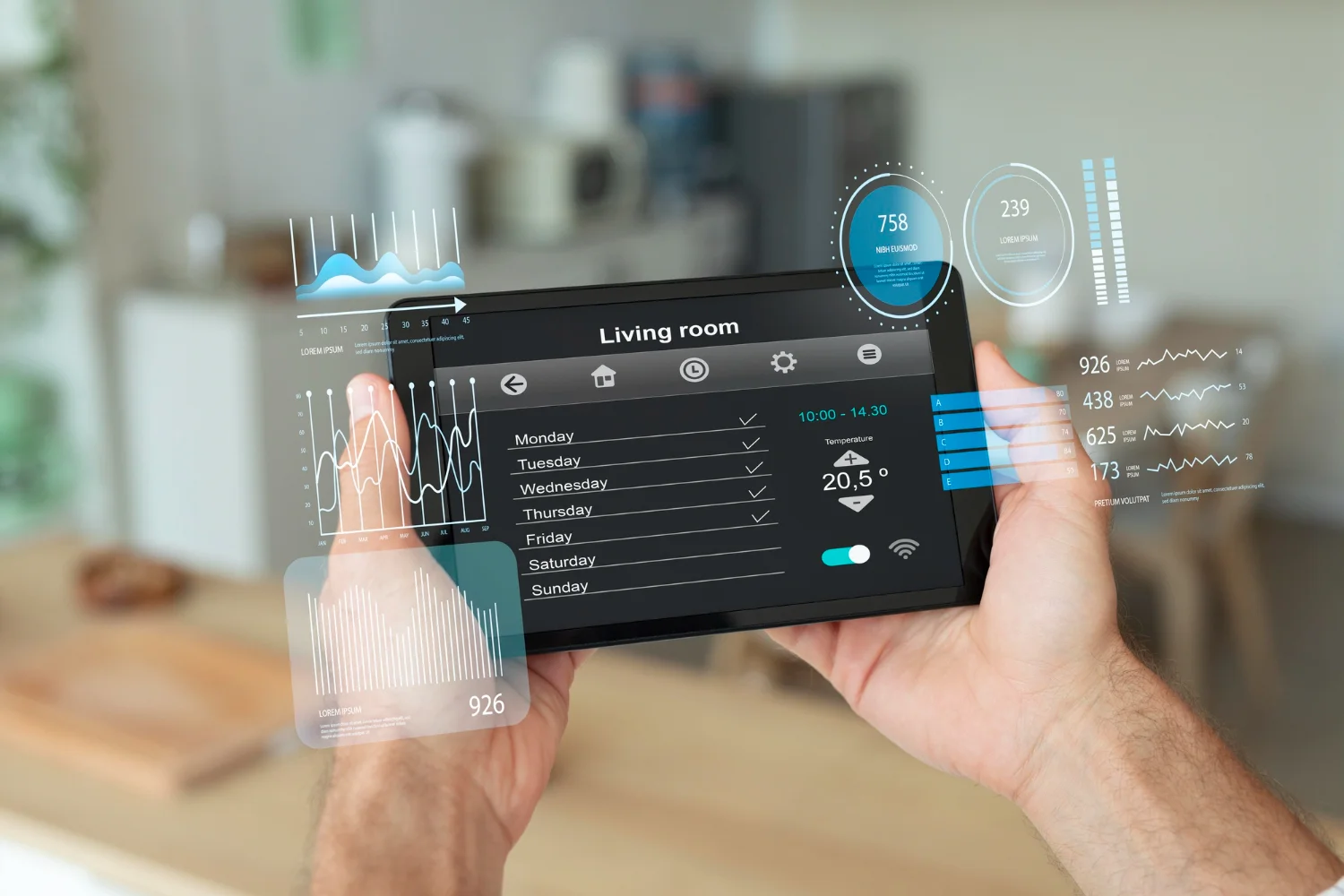The Need for a Fresh Classification Model
In the rapidly evolving digital economy, the way we classify AI SaaS products is no longer just academic it’s strategic. Enterprises, startups, investors, and even regulators now seek a clearer lens to understand how AI is shaping software-as-a-service (SaaS) offerings. And as AI becomes more autonomous, assistive, or embedded, the boundaries between traditional SaaS and intelligent systems are blurring fast.
In this article, we introduce an updated classification criteria system tailored to how AI SaaS products function in the real world. This framework doesn’t just categorize tools it helps businesses decide where to invest, how to build, and what to adopt.
1. Beyond Traditional SaaS: Why AI Needs New Classifications
SaaS used to be simple. Products were grouped by function: CRM, ERP, CMS. But now, a CRM could include predictive scoring, generative content, autonomous workflow optimization, or none of the above. AI’s involvement isn’t uniform.
Classification based purely on function is inadequate. Instead, we must now consider:
- AI integration depth
- Learning autonomy
- User role and interaction type
- Real-time decision-making capabilities
- Vertical vs. horizontal deployment
2. The Seven Emerging Classes of AI SaaS Products
To navigate this complexity, we propose a seven-tier structure that sorts products not only by their domain but by their AI logic, functionality, and interaction with users.
A. Core AI Infrastructure SaaS
These tools are the scaffolding on which AI applications are built. They include model-serving platforms, data labeling environments, feature stores, and training pipeline automation.
Examples:
- Model deployment platforms
- Vector database-as-a-service
- MLOps orchestration tools
Key Criteria:
- Built for technical users (data scientists, engineers)
- Enable full AI model lifecycle
- AI is the purpose, not just a feature
B. Platform-as-a-Service (AI PaaS)
PaaS for AI lowers the barrier for businesses to build customized models without needing deep data science teams. Think of drag-and-drop environments for training ML models or voice recognition models trained on user-uploaded data.
Subtypes:
- AutoML platforms
- Custom LLM builders
- No-code AI platforms
Differentiation Criteria:
- Customizability is the core feature
- Users interact directly with model logic
- Serves internal teams or product developers
These are not domain-specific tools they’re platforms on which you build your own domain-specific logic.
C. Functional AI SaaS (Horizontal Tools)
This is the most crowded and commercially visible layer. These products serve general business needs like marketing, sales, or analytics but with AI baked into the core functions.
Key Subtypes:
- AI-powered CRMs
- AI-powered HRMS systems
- AI-driven business intelligence tools
Classification Signals:
- Targets business users
- Performs repetitive tasks intelligently
- Offers predictive or generative features out-of-the-box
The trick in evaluating these tools lies in separating AI-enhanced from AI-native tools. Is AI foundational, or just a dashboard widget?
D. Assistive AI Applications
Not full business systems, but tools that amplify human effort such as writing assistance, image generation, coding copilots, or meeting summarizers.
Common Features:
- Lightweight UX
- Single-user focus
- Generative capabilities
Criteria for Classification:
- AI performs the work, user curates
- Output is often creative, not transactional
- Often used across multiple job functions
These tools usually focus on productivity acceleration, not full-stack automation.
E. Autonomous AI Systems
This is where AI SaaS gets deeply intelligent. These systems don’t just assist they decide, act, and learn, often with minimal human input.
Types Include:
- Autonomous customer service agents
- AI financial advisors
- AI ops incident handlers
Key Distinguishing Features:
- Continuous learning
- Decision-making under uncertainty
- Real-time adaptability
Such systems challenge the notion of a “user” in SaaS. Sometimes, the “user” is another system.
F. Industry-Specific AI SaaS
These verticalized systems are shaped by domain-specific data, compliance needs, and workflows like AI for healthcare diagnostics or legal contract analysis.
Vertically Focused Examples:
- Legal AI contract drafting platforms
- AI triage systems in hospitals
- AI credit scoring engines for fintech
Criteria to Spot These Tools:
- Pretrained on domain-specific data
- Deeply integrated with regulatory environments
- Use-case design is tailored to industry workflows
This class often crosses over with autonomous or assistive tools but remains niche in scope and deeply effective in performance.

G. Embedded AI Features in Traditional SaaS
Many legacy SaaS platforms are now retrofitting AI into their offering smart search, document summarization, automated insights. These are features, not full AI products.
Common Examples:
- Auto-tagging in content systems
- Smart reply suggestions in email tools
- Forecasting widgets in BI dashboards
Key Traits:
- AI is modular, not core
- Doesn’t define the product’s identity
- Often vendor-agnostic or powered by external APIs
Their presence is critical for competitiveness but doesn’t move the product into the AI-native category.
| Category | Subtypes | Primary Function | Ideal Users | AI Integration Depth |
| Core Infrastructure | Data Pipelines, Model Hosting, MLOps | Support AI Dev Lifecycle | DevOps, Data Engineers | High |
| Platform-as-a-Service | AutoML, Model Builders | Enable Custom AI Creation | Data Scientists | Very High |
| Functional SaaS | AI CRMs, AI Analytics, AI HRMS | Solve Domain-Specific Tasks | General Business Teams | Medium to High |
| Assistive AI Tools | Writing AI, Design AI, AI Copilots | Assist in Daily Productivity | Marketers, Designers, Coders | Medium |
| Autonomous Systems | AI Agents, AI Ops Bots | Perform Without Supervision | Tech-Forward Companies | Very High |
| Industry-Specific AI | Legal AI, Healthcare AI, Fintech AI | Tailored to Regulations/Workflows | Vertical Industries | High |
| Embedded AI Features | Smart Search, Auto-Tagging, Personalization | Enhance Existing Products | SaaS Developers | Low to Medium |
3. Evaluating AI Maturity Across Categories
While these seven classes offer structure, there is still fluidity in how mature the AI capabilities are. To assess this, we use four additional metrics:
A. Depth of AI Decision-Making
Does the product just give suggestions, or does it act on its own? This differentiates a predictive dashboard from an autonomous AI agent.
- Low: Statistical suggestions (e.g., lead scoring)
- Medium: Context-aware recommendations (e.g., smart CRM nudges)
- High: Real-time, multi-variable decisions (e.g., auto-remediation in ops)
B. Degree of Adaptability
Can the system learn over time? Static rules aren’t true AI. The more adaptive a tool is, the more “intelligent” its SaaS identity.
- No Adaptability: Pre-coded logic only
- Limited: User feedback loops
- Advanced: Self-improving models (online learning)
C. Level of Explainability
In regulated or mission-critical environments, knowing why the AI did something is as important as what it did.
- Opaque: Black-box outputs (e.g., deep LLMs)
- Partially Transparent: Justified predictions with basic rationale
- Fully Transparent: Visual decision trees, confidence scores, error analysis
D. Customizability for Enterprise Use
Can an enterprise tune or retrain the model? Is data kept proprietary or shared? These questions shape adoption in high-sensitivity sectors.
- Fixed AI Models: SaaS controls everything
- Semi-Custom: API access or prompt tuning
- Enterprise-Grade: Full retraining, private model hosting
4. Why This Classification Matters Now
AI SaaS is undergoing a transformation from feature-layer novelty to foundational business infrastructure. With that shift comes complexity and risk.
- For buyers, knowing which category a tool fits into helps assess integration needs, data privacy risks, and workforce training.
- For builders, it defines whether they’re creating a product or a platform, and what support layers they need (e.g., data ops, model auditability).
- For investors, it signals TAM, pricing elasticity, and defensibility.
In short, classification isn’t theoretical it’s strategic.
5. Emerging Hybrid Forms and Overlaps
No classification system is static. Hybrid models are emerging fast:
- Copilot + CRM: AI copilots embedded within sales tools, not just adjacent to them
- AI Legal Writer + Autonomous Filing: Combining writing generation with action execution
- Platform + Embedded AI Widgets: Build-your-own-CRM systems with plug-in AI modules
These combinations are reshaping the user experience and ownership models in SaaS. In some cases, the user becomes both the trainer and the consumer of AI.
6. The Role of APIs and Model Marketplaces
Many AI SaaS tools no longer build models they broker them. They integrate with OpenAI, Cohere, or Hugging Face APIs. This has birthed a meta-layer in classification: the AI aggregator SaaS.
How to Identify AI Aggregators:
- Offer interface + orchestration, not model training
- Let users plug in their own models
- Focus on compliance, customization, and UX
These tools are growing in importance as companies avoid vendor lock-in and seek modularity in AI infrastructure.
7. Rethinking KPIs for AI SaaS Classification
In traditional SaaS, you looked at churn, LTV, and DAUs. But AI SaaS demands new performance indicators:
- Model accuracy drift
- Prompt performance consistency
- Latency in model response
- User-AI interaction depth (measured in prompt chains or task completions)
If you’re building or evaluating an AI SaaS, these become critical to measuring true product performance, not just adoption.
8. Future of the AI SaaS Taxonomy
The AI SaaS landscape is only getting more nuanced. As open-source models improve and edge AI becomes viable, we may soon classify AI SaaS not just by role but by deployment:
- Cloud-native AI SaaS
- On-device AI SaaS
- Federated AI SaaS
- Private AI SaaS (air-gapped systems)
Just as the cloud era forced us to rethink software hosting, the AI era will push us to rethink software identity. Is a product still SaaS if it acts like a colleague?
Conclusion
The classification criteria of AI SaaS products is not an intellectual exercise it’s a strategic necessity. Businesses adopting AI must know what kind of intelligence they are deploying. Is it a platform? A co-pilot? A decision-maker? A domain-specific oracle?Using this seven-category framework, alongside layers like AI maturity, transparency, and adaptability, businesses can finally start making sense of a crowded, confusing marketplace. It’s not about choosing the most “AI-powered” tool. It’s about choosing the right kind of AI tool for the right kind of problem with the right classification system lighting the way.
Faqs
1. What is AI SaaS, and how does it differ from traditional SaaS?
AI SaaS (Artificial Intelligence Software as a Service) integrates intelligent algorithms into cloud-based software to automate, predict, or generate outcomes. Unlike traditional SaaS, which is often rule-based and reactive, AI SaaS solutions can learn, adapt, and make data-driven decisions with minimal human input.
2. Why is classifying AI SaaS products important?
Classification helps businesses, developers, and investors understand the depth, function, and risk level of an AI product. It provides clarity on the AI’s role whether it’s core infrastructure, assistive, autonomous, or domain-specific allowing for better strategic decisions around integration, scalability, and compliance.
3. How do I know if a product is truly AI-native or just AI-enhanced?
AI-native products have AI as their central function (e.g., autonomous agents, model builders), whereas AI-enhanced tools use AI as an additional feature (e.g., auto-suggestions in CRMs). A key indicator is whether the AI drives the main business outcome or simply augments existing features.
4. What are the main categories in the new AI SaaS classification system?
The seven categories are:
- Core AI Infrastructure
- AI Platform-as-a-Service
- Functional AI SaaS
- Assistive AI Tools
- Autonomous AI Systems
- Industry-Specific AI SaaS
- Embedded AI Features
Each is defined by its function, AI integration level, and user interaction model.
5. Can a single AI SaaS product fit into multiple categories?
Yes, hybrid models are increasingly common. For instance, an AI copilot inside a CRM can belong to both the Assistive AI and Functional SaaS categories. Classification should focus on the product’s primary role and value delivery.
6. How is AI maturity measured in SaaS products?
AI maturity is assessed based on decision-making depth, adaptability, explainability, and enterprise customizability. Mature AI SaaS products offer real-time decisions, learning capabilities, transparent logic, and model flexibility tailored to business needs.

